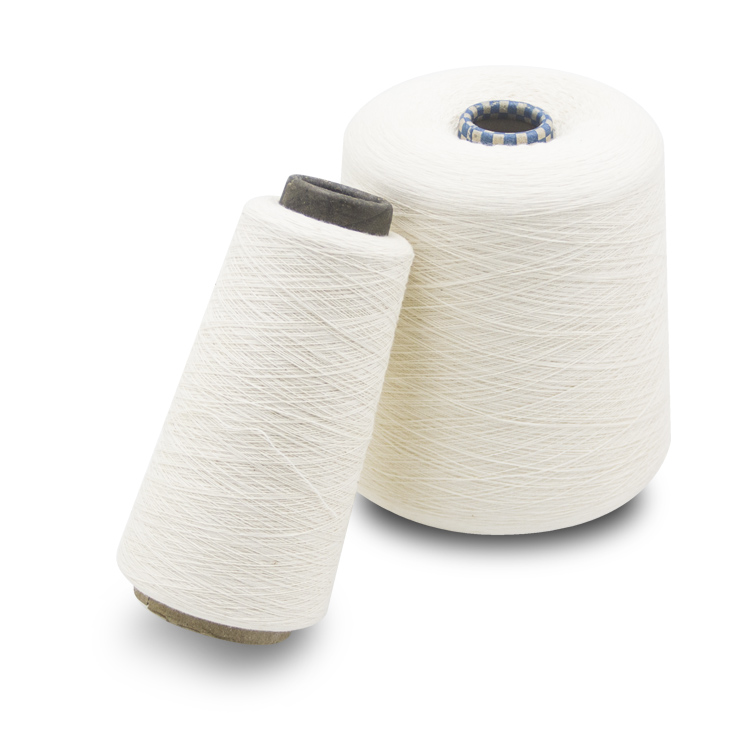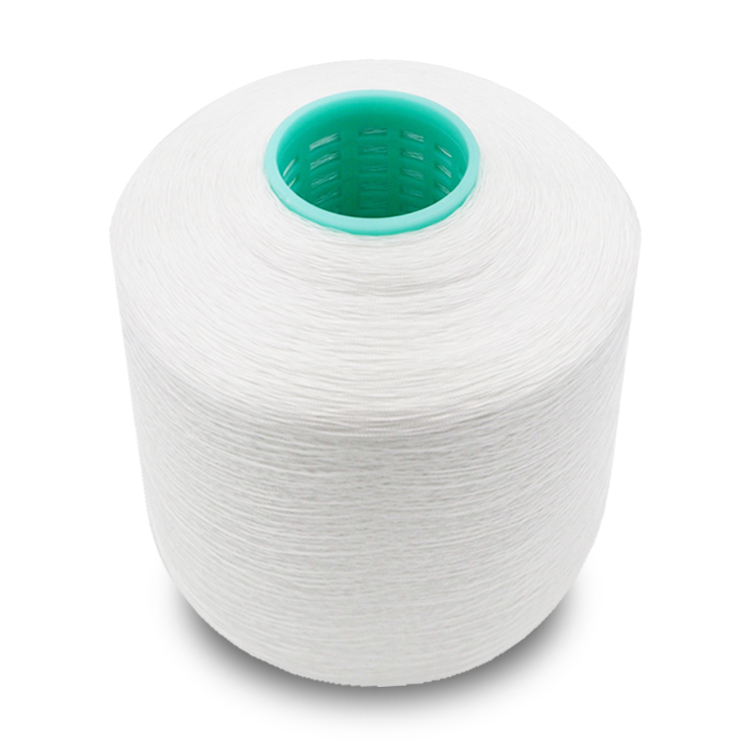
How to use cotton textile yarn thread
Preparation of raw cotton yarn thread

The preparation of cotton fibre yarn thread raw cloth includes: testing of cotton fibre yarn thread raw cloth, turning of cotton fibre yarn thread (batch, sub-box, printing) and sewing head of cotton fibre yarn thread. The purpose of cotton fibre thread raw cloth inspection is to check the quality of grey cloth and find problems that can be solved in time. The inspection includes two items: physical index and appearance defect of cotton fibre yarn thread. The former includes the length, range, weight, density and strength of the original cotton yarn thread, while the latter includes spinning defects, weaving defects, various stains and breakage. Usually about 10% of the total number of spot checks. After testing the original cotton fabric thread, the original cloth must be divided into batches and boxes, and printed on the head of the cloth, indicating the variety, processing technology, batch number, box number, release date and the duplicator code, so as to facilitate management. In order to ensure continuous batch processing, the original cloth must be sewed.
Sintering of cotton fiber yarn thread
The purpose of burning cotton fibre yarn thread is to burn down the fluff on the fabric surface, make the fabric surface smooth and beautiful, and prevent the uneven dyeing and printing defects caused by the existence of fluff in dyeing and printing. Cotton yarn thread fabrics are burned through high-temperature flame or red-hot metal surface rapidly in flat width.
At this time, the existing wool on the fabric surface warms up quickly and burns, while the cloth body is relatively close and warms up slowly.
Before reaching the ignition point, it has left the flame or red-hot metal surface to achieve burning. Fur, without the purpose of operating the fabric.
Desizing of cotton fiber yarn thread
In order to weave smoothly, textile mills often size warp yarns thread of cotton fibers to improve strength and wear resistance.
Sizing on grey cloth affects the water absorption of fabric, the quality of dyeing and finishing products, and increases the consumption of dyeing and chemical drugs.
Therefore, sizing should be removed before scouring of cotton fibre yarn thread.
This process is called desizing.
The sizes on cotton fabrics can be removed from the fabric by alkali desizing, enzymatic desizing, acid desizing and oxidant desizing.
Alkali desizing expands the size, reduces the adhesion with the fibers thread, and removes it from the fabric after washing.
Enzymes, acids and oxidants degrade starch, increase its solubility in water and remove it by washing.
Because acid and oxidant are harmful to cotton fibers, they are seldom used alone.
They are often used in combination with enzymatic desizing and alkali desizing.
Scouring of cotton fibre yarn thread
Natural impurities (pectin, waxy substances, nitrogen-containing substances, etc.) accompany the growth of cotton fibers thread.
After desizing, most sizes and some natural impurities of cotton fabrics have been removed, but a small amount of sizes and most of the natural impurities remain on the fabric thread.
The presence of these impurities makes the surface of cotton fabric thread yellow and poor permeability.
At the same time, the appearance quality of cotton cloth is greatly affected by the existence of cotton seed hull.
Therefore, it is necessary to scour the fabric thread in high temperature concentrated alkali solution for a long time to remove the residual impurities. Scouring is the use of caustic soda and other scouring aids with pectin, waxy substances, nitrogen-containing substances, cotton seed hull chemical degradation reaction or emulsification, expansion, etc., after washing, impurities from cotton fibre yarn thread fabric removed.
Bleaching of cotton fiber yarn thread
After scouring of cotton yarn thread, the appearance of cotton yarn is not white enough because of the existence of natural pigments on the yarn thread.
70% fine-cut hemp and 30% cotton fiber blended for dyeing or printing will affect the brightness of the color.
The purpose of bleaching is to remove the pigments and give the fabric the necessary and stable whiteness, while the cotton yarn thread itself is not significantly damaged.
The common bleaching methods of cotton yarn are sodium hypochlorite, hydrogen peroxide and sodium chlorite.
The PH value of sodium hypochlorite bleaching solution is about 10, which is carried out at room temperature.
The equipment is simple, the operation is convenient and the cost is low, but the fabric strength is damaged greatly and the whiteness is low.
The PH value of hydrogen peroxide bleaching solution is 10. When bleached at high temperature, the bleached fabric has high whiteness and stability, good handle, and can also remove pulp and natural impurities.
The disadvantage is high demand for equipment and high cost.
Under appropriate conditions, combined with caustic soda, desizing, scouring and bleaching can be completed at one time.
The PH value of sodium chlorite bleaching solution is 4-4.5, which is carried out at high temperature.
It has the advantages of good whiteness and little damage to cotton fibers. However, it is easy to produce toxic gases, pollute the environment, corrode the equipment and require special metal materials to make, so its application is limited.
Sodium hypochlorite and sodium chlorite should be dechlorinated after bleaching in order to prevent damage of cotton yarn fabric due to residual chlorine.
Mercerizing of cotton fibre yarn thread
Mercerizing refers to the process of treating cotton fabric thread with concentrated caustic soda solution at room temperature or low temperature under tension in the warp and weft directions of cotton fibers thread to improve its properties.
After mercerizing, the cotton yarn thread will disappear due to the expansion of the yarn thread, the natural twist of the yarn thread will disappear, and the cross-section will be elliptical, which will have more regularity in the reverse direction of light, thus enhancing the luster of the yarn thread. Increasing the invisible zoning of fibers increases the dyeing uptake of dyes during dyeing. With the increase of orientation degree, the strength of fabrics thread is increased and the setting effect is also obtained. After mercerizing, the alkali must be removed thoroughly by means of washing and absorbing alkali or steaming box alkali removal, or flat washing alkali removal, until the cotton yarn thread is neutral.




